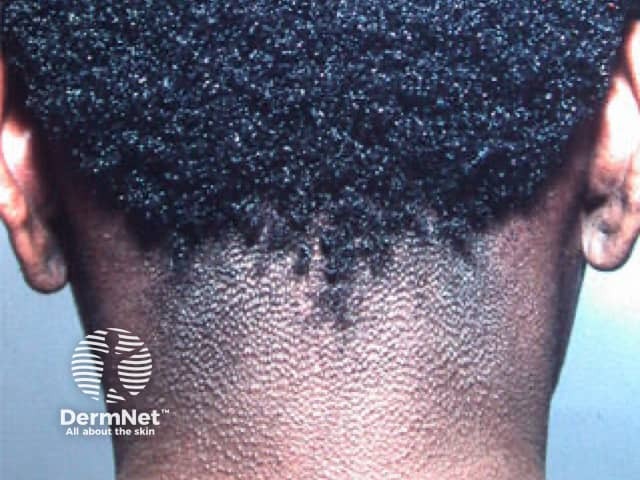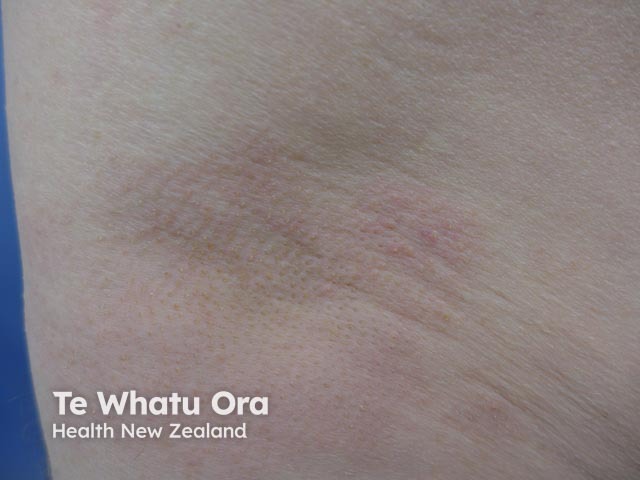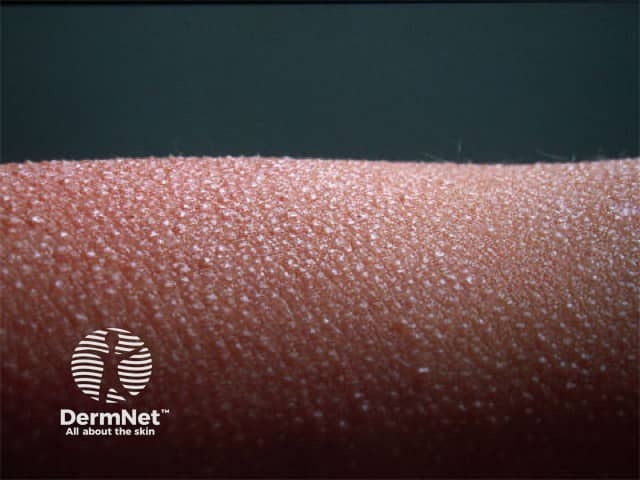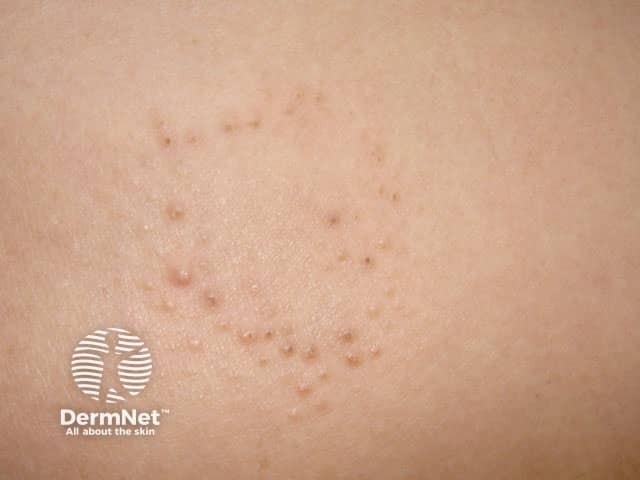Main menu
Common skin conditions

NEWS
Join DermNet PRO
Read more
Quick links
Lichen spinulosus is a clinically distinctive variant of keratosis pilaris. It is characterised by solitary or multiple patches of minute follicular papules, each centred by a horny spine, which may occur on any part of the body. It is also called "keratosis spinulosa".
Lichen spinulosus occurs during childhood to young adulthood, with most cases occurring during adolescence. It tends to have a sudden onset and is not accompanied by other signs and symptoms. The follicular papules are small rough bumps that appear in round or oval patches, which extend and spread rapidly over a few days to affect large areas of skin.
When a patch is rubbed gently with the fingers, it has been likened to the feel of brushing your fingers over a nutmeg grater. The lesions do not cause any pain but some patients may complain of pruritus (itching).

Lichen spinulosa

Lichen spinulosa

Lichen spinulosus

Lichen spinulosa

Lichen spinulosa

Dermatoscopic view
The cause of lichen spinulosus is unknown. Several possible causes have been postulated but none have been confirmed. These include:
Diagnosis is made by clinical assessment alone. At present, no specific laboratory or diagnostic tests have been identified to make or confirm a diagnosis of lichen spinulosus. Histological findings of lichen spinulosus are similar to those found in keratosis pilaris.
There is no specific treatment for lichen spinulosus and in most cases it resolves spontaneously within 1–2 years, although it can persist for decades in some patients. Some patients may find the following useful: